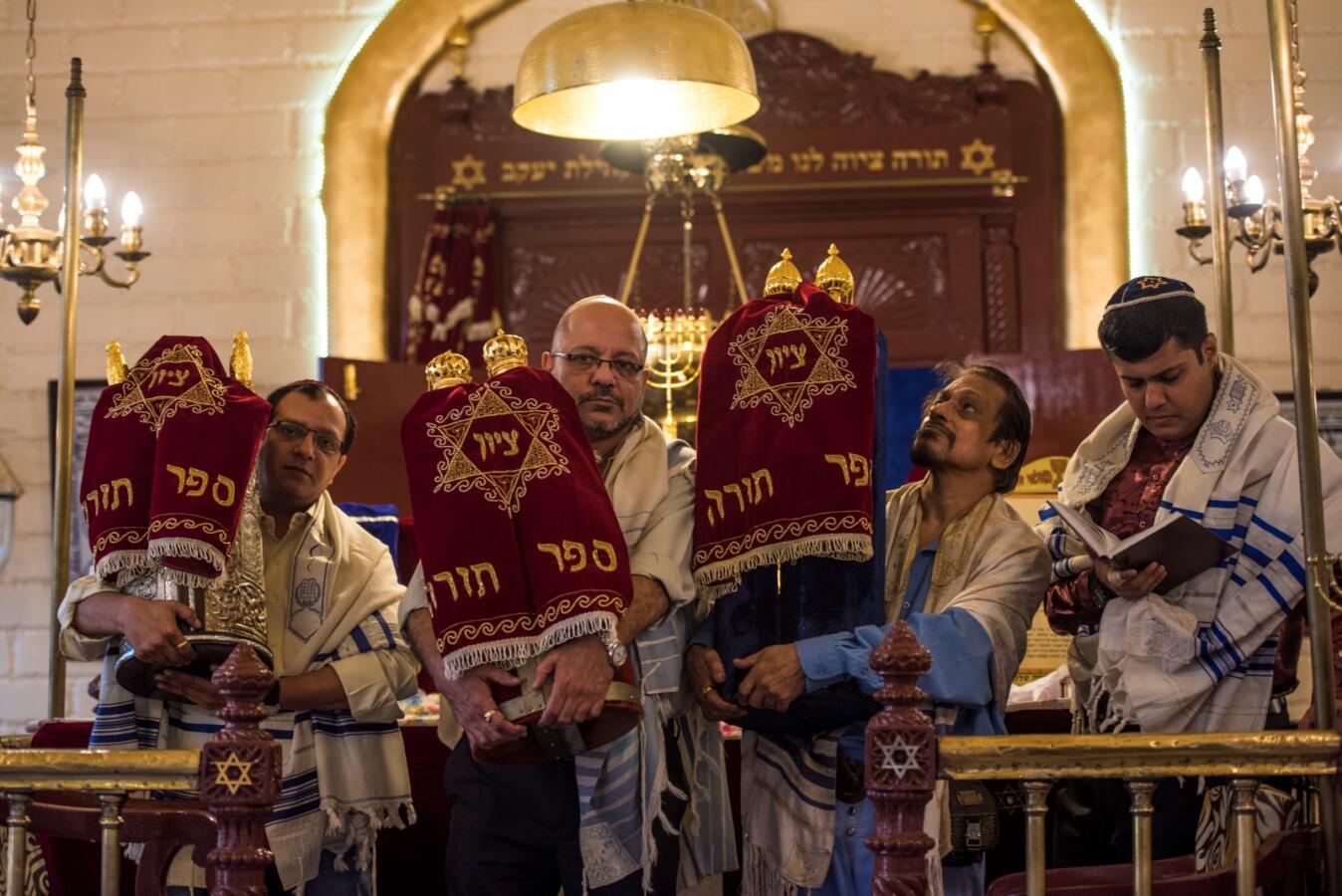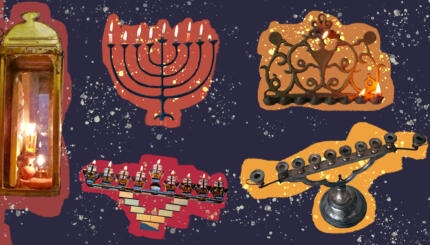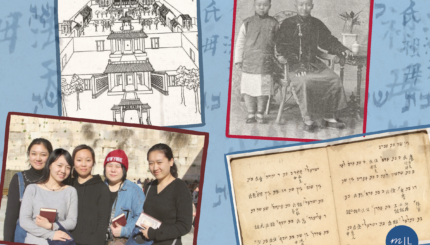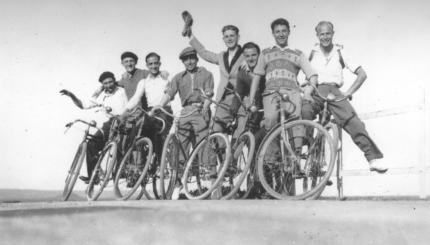The Bene Israel have always been the largest of the three Jewish communities in India. (The other two are Cochin and Baghdadi.) In 1838, for example, the total Bene Israel population of India was estimated at 8,000, far more than the combined numbers of Baghdadi and Cochin Jews. For generations they lived as a distinct endogamous group in rural villages, some of them in remote areas, throughout the Kolaba District of Maharashtra State. Traditionally, the Bene Israel worked in sesame-oil pressing; they also farmed their land, peddled produce, and worked as skilled carpenters.
Because the Bene Israel families were scattered among many villages, community life in Kolaba District was extremely limited, and group prayer and Jewish rituals took place in the home. The community’s religious observance was based on biblical Judaism: they celebrated Jewish holidays related to the Bible; the Sabbath was strictly observed; all male children were circumcised eight days after birth; and the first Hebrew verse of the Shema was recited on all occasions for prayer.
Initially, the Bene Israel had no scrolls, prayer books, or synagogues, nor were they familiar with rabbinic Judaism or the details of halakhah. They were guided by three Bene Israel religious leaders called kazis, who traveled from village to village in order to officiate at all rites of passage.
Origins of the Community
According to the community’s own oral tradition, they are descended from “seven couples from a country to the north,” the sole survivors of a shipwreck off the Konkan coast near Navagaon (about 48 km south of Bombay).

Help us keep Jewish knowledge accessible to millions of people around the world.
Your donation to My Jewish Learning fuels endless journeys of Jewish discovery. With your help, My Jewish Learning can continue to provide nonstop opportunities for learning, connection and growth.
Ever since the early 19th century, Christian missionaries and Jews (non-Bene Israel as well as Bene Israel) have offered diverse suggestions to explain the community’s origins. For example, the centrality of the prophet Elijah in Bene Israel tradition produced the theory that their ancestors lived in the Holy Land in the time of Elijah (eighth century BCE) and that the “country to the north” was actually Israel.
Other theories have these ancestors tarrying in Persia or Yemen before ending up, shipwrecked, on the Konkan coast. Dating of their arrival in the Konkan ranges anywhere from the eighth century BCE to the sixth century CE.
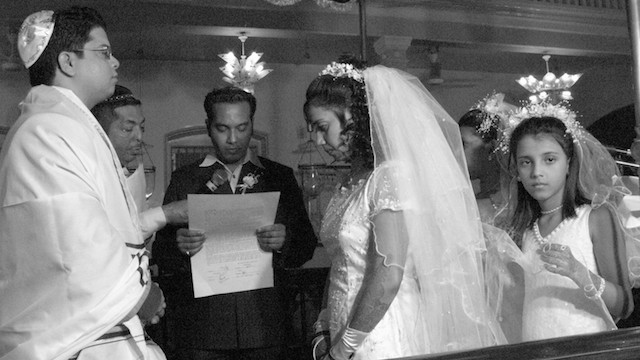
The Bene Israel Community in Bombay
In 1674, the British East India Company moved its headquarters to the islands of Bombay (Mumbai). By the mid-18th century, Bombay had developed into a metropolis with a bustling port city, attracting thousands of Indians from the countryside, including hundreds of Bene Israel.
Although most of the community remained in the villages, many Bene Israel were tempted by the opportunities in Bombay for employment and education. Others moved to the city in order to enlist in the “Native Forces” of the British East India Company‘s (and later the British Government’s) Military Services. The relative proportion of enlistment, of decorations for bravery, and of promotion to the highest ranks possible for Native Forces was extremely high among the Bene Israel, given the size of their total population.
In Bombay, Bene Israel worked mainly in construction, in the shipyards, and as carpenters. Here, they were introduced to new techniques and new kinds of tools. Because an oil-pressing monopoly already existed in the city, they did not pursue their traditional occupation.
In 1796, the first Bene Israel synagogue, Sha’ar haRahamim, was founded in Bombay.
Thanks to the Missionaries
India’s Bene Israel are unique among Diaspora communities because it was a Christian missionary who created — albeit unintentionally — a firm basis for the Bene Israel community’s entry into mainstream Jewry.
The British did not allow missionaries into British territories in India until 1813, but soon thereafter European and American Christian missions were established with headquarters in Bombay. The Reverend John Wilson of the Church of Scotland (later of the Free Church of Scotland) arrived in India in 1829 and worked with the Indians of Bombay and Kolaba District until his death in 1875. He was a scholar, an erudite writer, and one of the founders of Bombay University (1857).
Wilson introduced Hebrew as a subject for matriculation and for higher education. He saw in the Bene Israel the biblical “remnant of Israel.” It was Wilson who wrote, in 1838, the first serious account of the Bene Israel and their customs. Already in 1832, he wrote and published in Bombay The Rudiments of Hebrew Grammar in Marathi, “intended for the benefit of the Native Israelites.”
Using Wilson’s book of Hebrew-Marathi grammar as a first step, some pupils became very proficient in Hebrew. In due course, they themselves became teachers of Hebrew, not only in Wilson’s schools but also at the college and university level. These Bene Israel scholars published Marathi translations of classic Hebrew texts, Jewish prayer books, rabbinical commentaries, and sermons. Each Hebrew text was accompanied by a parallel translation into Marathi, for the first time giving the Bene Israel access to a wide range of Jewish texts.
In addition, Bene Israel studied the English language and secular subjects in Wilson’s schools, which opened up a whole new world of knowledge. Most important, their literacy in Hebrew and in English enabled them to communicate and maintain contact with mainstream Jewry.
It is remarkable that during a century of concentrated efforts to convert Bene Israel to Christianity, the various missions met with almost no success at all. In 1854, after Rev. Wilson had been in India for 25 years, he wrote “… the labours of the Bombay Missions have not yet been blessed to the conversion of any of their number.”
Jewish Education and Communal Organizations
While Christian missionaries were trying to convert the Bene Israel, in 1826 a group of dedicated Cochin Jewish teachers left their community in order to live among the Bene Israel in Bombay and Kolaba District and teach them about mainstream Jewish observance. A second group of Cochin teachers arrived in 1833.
On weekdays, they taught Jewish religion and Hebrew reading and writing; on Saturdays, they conducted morning prayer services and discussed halakhah and Jewish beliefs in the afternoons.
More Bene Israel synagogues were founded, and each became a vital center of religious, social, and communal life. With no ordained rabbi, the synagogue was served by a hazan (cantor), usually a Cochin, Baghdadi, or Yemenite Jew who also served as shohet (slaughterer for meat), mohel (ritual circumcisor), and sofer (scribe).
During the 19th century, Bene Israel families also settled in Pune, Ahmadabad, Karachi, Delhi, and other Indian cities. Initially, Jewish prayer services were held in the homes of community members, but in time a substantial synagogue or–where there were too few Jewish residents—an attractive prayer-hall was erected.
Two main factors contributed to the community’s dispersal throughout the Indian subcontinent. First of all, during the British period, educated Bene Israel were favored for civil service positions. Second, relatively large numbers of Bene Israel served in the government police services, the army, navy, merchant marine, and (in the 20th century) the air corps. All these vocations tended to involve permanent or temporary postings far from Bene Israel population centers.
For those stationed in remote places, the only reminder of their Jewishness would often be home life and the Jewish calendar–that is, the Jewish High Holidays, Passover, or family rites of passage. On these occasions, they would travel to Bombay, to their native villages, or to the nearest Jewish congregation in order to celebrate with family or at least be together with fellow Jews.
The Bene Israel in Recent Times
Over the course of the 19th century, Bene Israel were confronted for the first time with the simultaneous influences of Jewish orthodoxy, secular education, and Western ideas. The choices they made then–and continued to make in the 20th century–depended upon such variables as proximity to other Jews and to a synagogue, finances, and degree of actual contact and familiarity with various expressions of Jewish observance.
In the 20th century, the Bene Israel Conference (1917-37) and the All India Israelite League (1918-25) became foci of Bene Israel communal development. Both organizations deliberated upon social, religious, educational, and economic matters affecting the community.
At the end of the 1940s, with India’s total population at 350 million, the Bene Israel population in India peaked at an estimated 24,000 to 25,000.
After 1948, many members of the community began emigrating, mainly from the cities, to the new State of Israel. They were motivated by a combination of three equally compelling factors: a sense of Jewish identity, Zionist idealism, and concern over Bene Israel economic prospects in the newly-independent India.
A minority of Bene Israel emigrated to England, the United States, Canada, or Australia. Large-scale emigration from the Villages did not occur until the early 1970s. Since then, the total number of Bene Israel remaining in India–almost all in urban centers–remains fairly stable at around 5,000.
In Israel, the Bene Israel population (i.e., persons with at least one Bene Israel parent) was estimated as of 1994 at 40,000, almost all of whom have settled in cities or in development towns.
When members of the community first arrived in Israel, very little was known about the history or cultural background of the Bene Israel, which exacerbated their problems of absorption. Although the years that followed their immigration were therefore made unnecessarily difficult, the community’s situation has greatly improved.
The Bene Israel in Israel have established several social and cultural organizations, which serve as foci of community identity. At times these organizations present information about the Bene Israel to Israeli society at large. Mainly, however, they help both the young and the older members of the community maintain a link with their heritage and with India, the country that provided a friendly home for generations of Bene Israel.
Reprinted with permission from The Israel Museum, Jerusalem.
